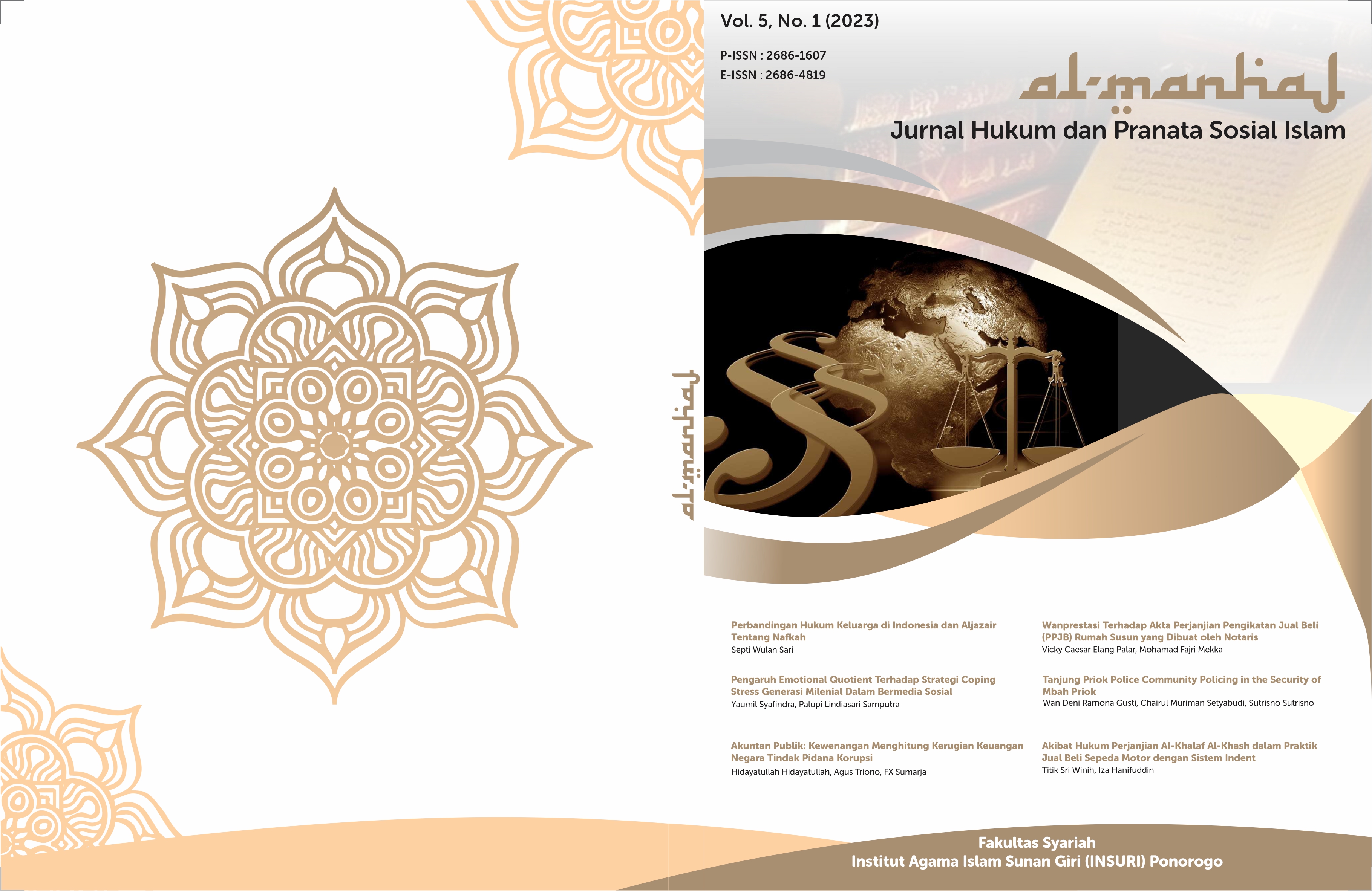Legal Analysis of Development in Organizational Ambidexterity in Higher Education Institutions
DOI:
https://doi.org/10.37680/almanhaj.v5i1.2565Keywords:
Development Law, Ambidexterity, Higher Education, National DevelopmentAbstract
Ambidexterity plays an important role in organizational development, which influences national development. National development is a joint effort between the people and the state which is carried out in order to improve themselves in a better direction together. The aim of this research is to analyze the law of organizational amidecsterity development in higher education institutions. This research is part of a qualitative research using a systematic review approach. Systematic review is a method that uses previous evidence-based evidence through review, evaluation, structured evaluation, classification and categorization. The results of the research analysis show that the ambidexterity of higher education institutions is a model that integrates the performance determinants of classy higher education institutions, and proposes a commitment that is influenced by: (a) brand ambidexterity, which is explorative and exploitative oriented; (b) able to adapt to the social and economic environment; and (c) being responsive to students' perceptions of the university's brand image and reputation which will increase their commitment to their studies. The implication of this research is to provide an overview to higher education institutions so they can develop the concept of ambidexterity in the process of implementing higher education.
References
Joerger, A. G. (2022). Organizational ambidexterity: Antecedents and Consequences. https://www.tdx.cat/handle/10803/675866%0Ahttps://www.tdx.cat/bitstream/handle/10803/675866/2022_Tesis_García Joerger_Alexandra.pdf?sequence=1
Kassotaki, O. (2022). Review of Organizational Ambidexterity Research. SAGE Open, 12(1). https://doi.org/10.1177/21582440221082127
Kolster, R. (2021). Structural ambidexterity in higher education: excellence education as a testing ground for educational innovations. European Journal of Higher Education, 11(1), 64–81. https://doi.org/10.1080/21568235.2020.1850312
Loisa, R., Paramita, S., & Sari, W. P. (2022). Penerapan Program Merdeka Belajar Kampus Merdeka Tingkat Fakultas Di Universitas. Jurnal Muara Ilmu Sosial, Humaniora, Dan Seni, 6(1), 70. https://doi.org/10.24912/jmishumsen.v6i1.16052.2022
Nguyen, B., Yu, X., Melewar, T. C., & Hemsley-Brown, J. (2016). Brand ambidexterity and commitment in higher education: An exploratory study. Journal of Business Research, 69(8), 3105–3112. https://doi.org/10.1016/j.jbusres.2016.01.026
Nurwendi, W., & Haryadi, D. (2022). Peran Ambidexterity Organisasi Sebagai Variabel Intervening Dalam Meningkatkan Kinerja Pemasaran UMKM Di Masa Covid-19. IQTISHADUNA: Jurnal Ilmiah Ekonomi Kita, 11(1), 47–64. https://doi.org/10.46367/iqtishaduna.v11i1.513
O’Reilly, Charles, A., & Tushman, M. (2013). Organizational Ambidexterity: Past, Present and Future Academy of Management Perspectives, Forthcoming. Academy of Management Perspectives, 27(4), 324–338. http://www.law.stanford.edu/https://ssrn.com/abstract=2285704
Prasetio, A. B., Aboobaider, B. bin M., & Ahmad, A. bin. (2022). Organizational Ambidexterity as an Outcome of Quality Dimensions and Triple Helix: The Role of Technology Readiness and User Satisfaction. Sustainability (Switzerland), 14(21). https://doi.org/10.3390/su142114237
Rodrigues, L. C., Vivan, A. M., & Storopoli, J. E. (2016). Modeling higher education attractiveness to stand global environment. Revista Gestão Universitária Na América Latina - GUAL, 21–36. https://doi.org/10.5007/1983-4535.2016v9n1p21
Sari, S. R. (2017). Ambidexterity : Dibutuhkan Untuk Keberlangsungan Kinerja Organisasi. Jurnal Riset Manajemen Dan Bisnis Fakultas Ekonomi UNIAT, 2(3), 433–438.
Soares, J. L., Dos Reis, D. R., da Cunha, J. C., & Neto, P. J. S. (2018). Organizational ambidexterity: A study in brazilian higher education institutions. Journal of Technology Management and Innovation, 13(3), 36–46. https://doi.org/10.4067/S0718-27242018000300036
Sugiyono. (2009). Metode Penelitian Kuantitatif, Kualitatif dan R&D. Bandung : Alfabeta.
Taródy, D. (2016). Organizational ambidexterity as a new research paradigm in strategic management. Vezetéstudomány / Budapest Management Review, May, 39–52. https://doi.org/10.14267/veztud.2016.05.04
Tushman, C. A. O. I. and M. L. (2014). https://hbr.org/2014/04/the-ambidextrous-organization.
Wibowo, W. P. (2019). Analysis Of Ambidexterity Management Strategy On Startup. 1(1), 1–11
Downloads
Published
How to Cite
Issue
Section
License
Copyright:
- Author retains the copyright and grants the journal the right of first publication of the work simultaneously licensed under a Creative Commons Attribution 4.0 International License that allows others to share the work with an acknowledgment of the work's authorship and initial publication in this journal.
- Author is able to enter into separate, additional contractual arrangements for the non-exclusive distribution of the journal's published version of the work (e.g., post it to an institutional repository or publish it in a book) with the acknowledgment of its initial publication in this journal.
- Author is permitted and encouraged to post his/her work online (e.g., in institutional repositories or on their website) prior to and during the submission process, as it can lead to productive exchanges, as well as earlier and greater citation of the published work (See The Effect of Open Access).
License:
-
Attribution — You must give appropriate credit, provide a link to the license, and indicate if changes were made. You may do so in any reasonable manner, but not in any way that suggests the licensor endorses you or your use.
-
No additional restrictions — You may not apply legal terms or technological measures that legally restrict others from doing anything the license permits.
You are free to:
- Share — copy and redistribute the material in any medium or format
- Adapt — remix, transform, and build upon the material for any purpose, even commercially.

This work is licensed under a Creative Commons Attribution 4.0 International License.














